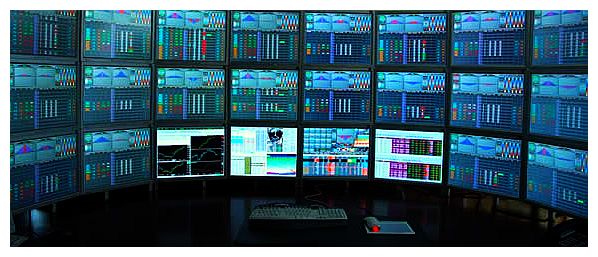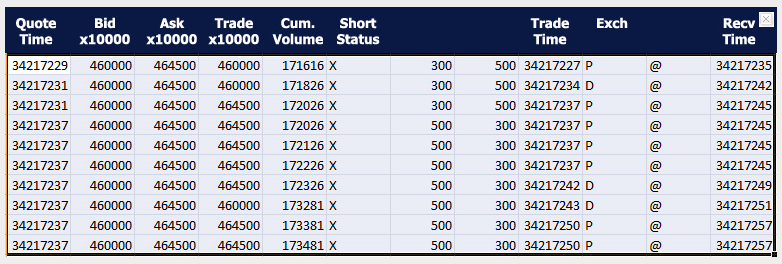Working on a white paper about my recent findings, I stumbled on more confirmation of the decoupling of predictability and profitability in the market – the culprit being high frequency trading (HFT).
It makes a good story.
So I am looking for high quality stock data and came across the CalTech Quantitative Finance Group market data guide. They tout QuantQuote, which does look attractive, and was cited as the data source for – How And Why Kraft Surged 29% In 19 Seconds – on Seeking Alpha.
In early October 2012 (10/3/2012), shares of Kraft Foods Group, Inc surged to a high of $58.54 after opening at $45.36, and all in just 19.93 seconds. The Seeking Alpha post notes special circumstances, such as spinoff of Kraft Foods Group, Inc. (KRFT) from Modelez International, Inc., and addition of KRFT to the S&P500. Funds and ETF’s tracking the S&P500 then needed to hold KRFT, boosting prospects for KRFT’s price.
For 17 seconds and 229 milliseconds after opening October 3, 2012, the following situation, shown in the QuantQuote table, unfolded.
Times are given in milliseconds past midnight with the open at 34200000.
There is lots of information in this table – KRFT was not shortable (see the X in the Short Status column), and some trades were executed for dark pools of money, signified by the D in the Exch column.
In any case, things spin out of control a few milliseconds later, in ways and for reasons illustrated with further QuantQuote screen shots.
The moral –
So how do traders compete in a marketplace full of computers? The answer, ironically enough, is to not compete. Unless you are prepared to pay for a low latency feed and write software to react to market movements on the millisecond timescale, you simply will not win. As aptly shown by the QuantQuote tick data…, the required reaction time is on the order of 10 milliseconds. You could be the fastest human trader in the world chasing that spike, but 100% of the time, the computer will beat you to it.
CNN’s Watch high-speed trading in action is a good companion piece to the Seeking Alpha post.
HFT trading has grown by leaps and bounds, but estimates vary – partly because NASDAQ provides the only Datasets to academic researchers that directly classify HFT activity in U.S. equities. Even these do not provide complete coverage, excluding firms that also act as brokers for customers.
Still, the Security and Exchange Commission (SEC) 2014 Literature Review cites research showing that HFT accounted for about 70 percent of NASDAQ trades by dollar volume.
And associated with HFT are shorter holding times for stocks, now reputed to be as low as 22 seconds, although Barry Ritholz contests this sort of estimate.
Felix Salmon provides a list of the “evils” of HFT, suggesting a small transactions tax might mitigate many of these,
But my basic point is that the efficient market hypothesis (EMH) has been warped by technology.
I am leaning to the view that the stock market is predictable in broad outline.
But this predictability does not guarantee profitability. It really depends on how you handle entering the market to take or close out a position.
As Michael Lewis shows in Flash Boys, HFT can trump traders’ ability to make a profit


You might find the recent paper by Baron, Brogaard, and Kirilenko, 2014, Risk and Return in High Frequency Trading interesting. They are with the CFTC and used proprietary data to calculate the sorts of returns being generated by HFT in trading the E-mini.
Here’s a link http://www.smallake.kr/wp-content/uploads/2014/05/SSRN-id2433118.pdf
Good literature review, up-to-date stuff.
Thanks